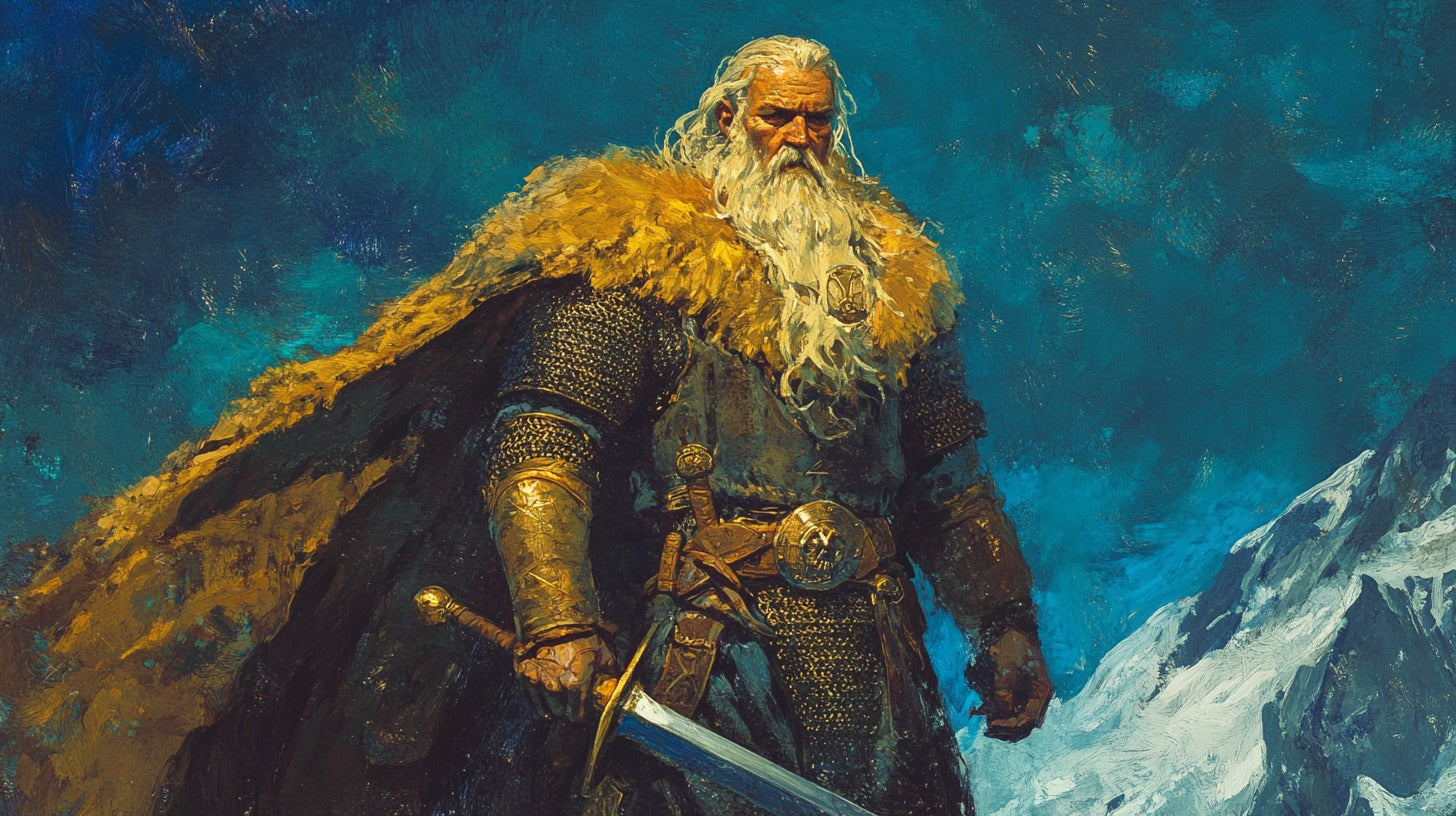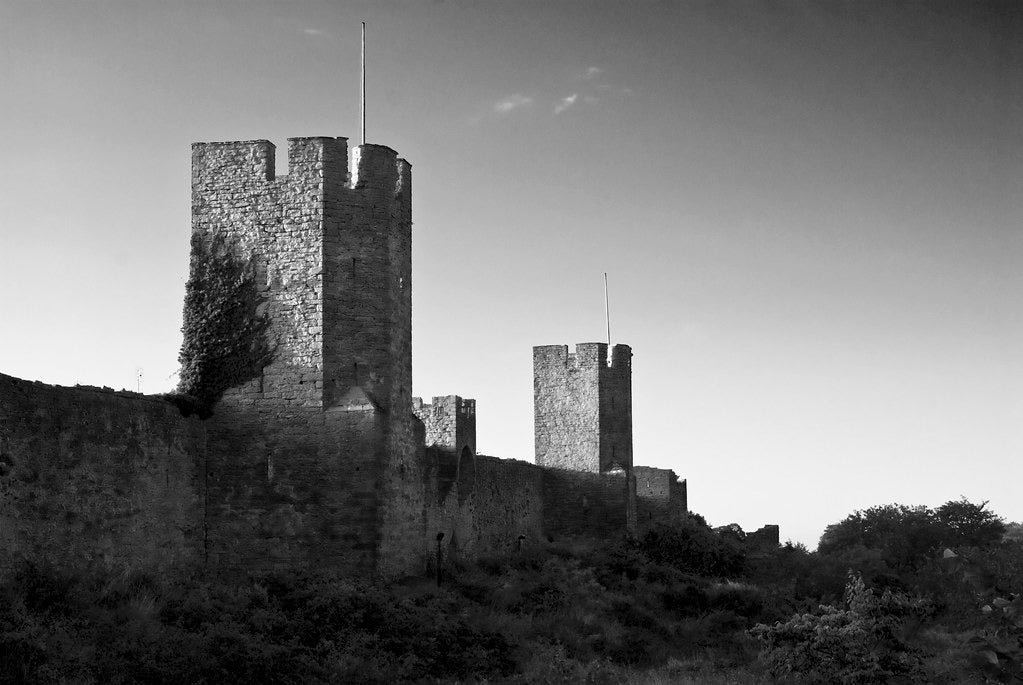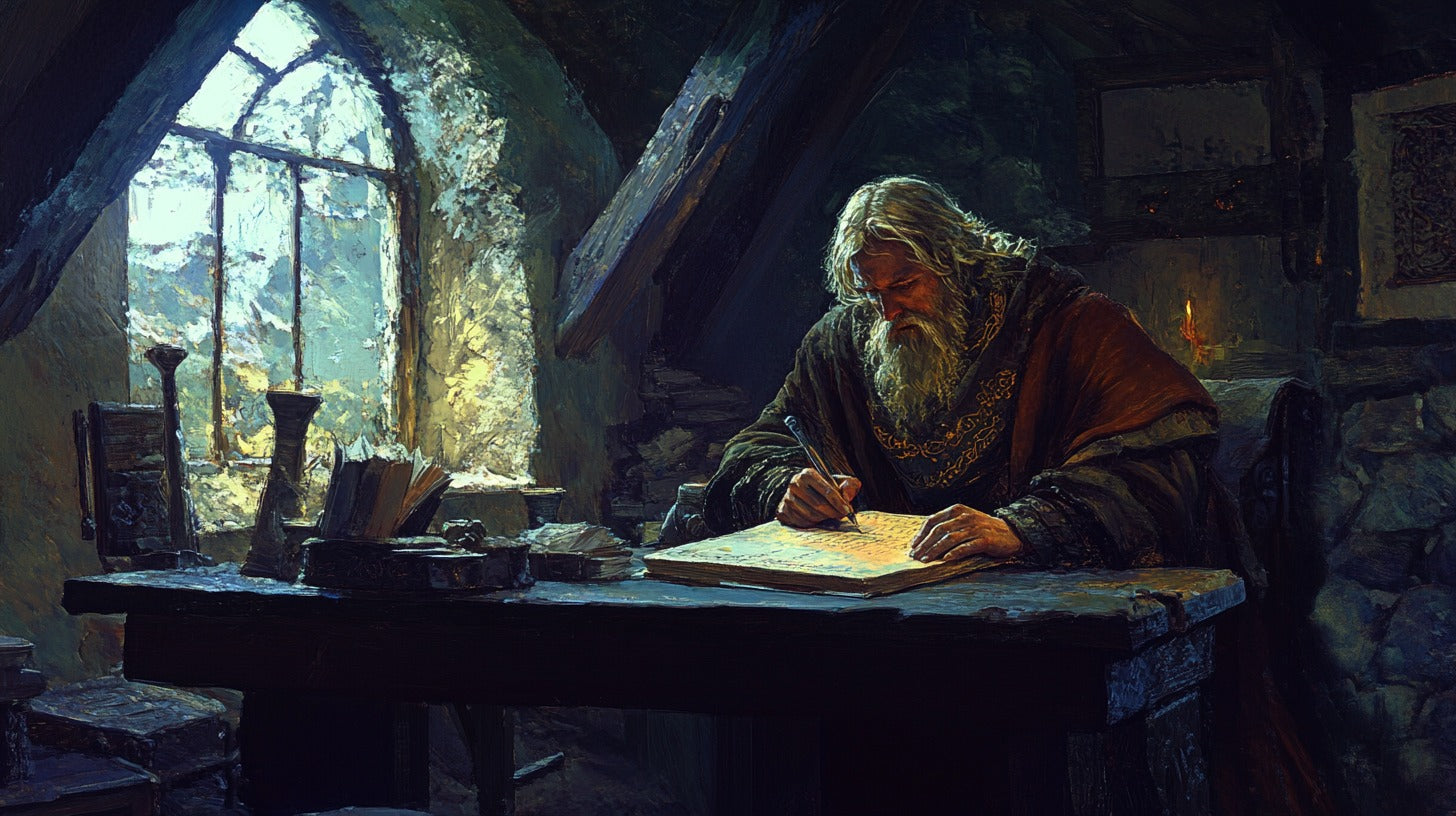
Snorri Sturluson: The Man Who Preserved Norse Mythology
In the harsh, unforgiving landscape of medieval Iceland, where the line between myth and reality often blurred like the horizon in a snowstorm, a child was born who would one day become the keeper of an entire culture's legends. This child was Snorri Sturluson, and his life would prove to be as complex and fascinating as the tales he would later preserve.
Birth and Family
Snorri drew his first breath in the year 1179, in the western Icelandic settlement of Hvammur. Born into the powerful Sturlungar family, Snorri's fate was intertwined with the political machinations of his time from the very start. His father, Sturla Þórðarson, was a chieftain of no small renown, and his mother, Guðný Böðvarsdóttir, was known for her sharp wit and extensive knowledge of genealogy and history.
But as any reader of sagas knows, a notable lineage is often as much a curse as a blessing. The Sturlungar family was embroiled in the complex web of alliances and feuds that characterized Icelandic society in the Age of the Sturlungs. Young Snorri, like a pawn on a chessboard, would soon find himself moved by forces beyond his control.
Education and Early Influences
At the tender age of three, Snorri's life took a turn that would shape his future in ways no one could have predicted. He was fostered by Jón Loftsson, the wealthiest and most influential chieftain in Iceland at the time. This fostering, a common practice in medieval Iceland, was more than just a political move - it was the key that would unlock the vast treasure trove of knowledge that Snorri would later share with the world.
Jón Loftsson's estate at Oddi was renowned as a center of learning, a place where the old stories were still told around the fire on long winter nights. Here, young Snorri's mind was filled with tales of gods and heroes, of great battles and cunning tricks. He learned the intricacies of skaldic poetry, the art of weaving words into complex patterns that could capture the essence of a moment or the glory of a king.
But Snorri was not content to simply absorb knowledge. Like a master blacksmith working with the finest steel, he began to forge his learning into something new, something that would outlast the harsh Icelandic winters and the passing of centuries.
Political Career
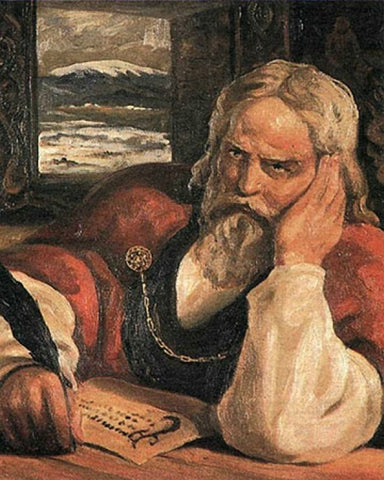
Rise to Power
As Snorri grew into manhood, he proved to be as adept at navigating the treacherous waters of Icelandic politics as he was at crafting verses. He married well, not once but twice, each union bringing him more wealth and influence. By 1206, he had become a lawspeaker at the Althing, the Icelandic parliament, a position that required not only a sharp mind but also a silver tongue.
Snorri's rise to power was like watching a master player in a game of hnefatafl, the Viking board game of strategy. Each move was calculated, each alliance carefully considered. He accumulated godord, chieftaincies that were the currency of power in medieval Iceland, becoming one of the most influential men in the country.
Conflicts and Alliances

Hoddmímis - Norse Pagan Yggdrasil Ring
Relationship with Norwegian Royalty
But Snorri's ambitions didn't stop at the shores of Iceland. Like many Icelandic chieftains of his time, he looked to Norway, the motherland, for opportunities to increase his power and prestige. In 1218, he embarked on a journey to Norway, where he became a member of the royal court of King Hákon Hákonarson.
This relationship with the Norwegian crown was a double-edged sword, as sharp and dangerous as the blade of a Viking warrior. On one hand, it brought Snorri great honor and influence. On the other, it embroiled him in the complex politics of a foreign court, a game with rules he didn't fully understand.
Icelandic Power Struggles
Back in Iceland, Snorri's power continued to grow, but so did the number of his enemies. The Age of the Sturlungs was a time of near-constant conflict, with chieftains vying for power like wolves fighting over a carcass. Snorri, for all his learning and political acumen, was not above the fray.
His relationships with his brothers, particularly Sighvatur and Þórður, were as complicated and volatile as the Icelandic weather. Alliances were made and broken, oaths sworn and betrayed. It was a time of great turmoil, and Snorri was at the heart of it all.
Literary Contributions
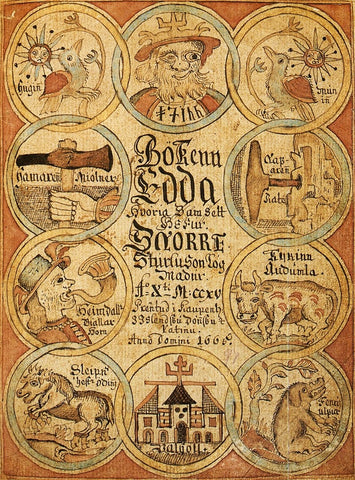
The Prose Edda
While Snorri's political life was marked by conflict and intrigue, his true legacy lies in his literary works. Chief among these is the Prose Edda, a work that stands as a testament to Snorri's deep knowledge of Norse mythology and his skill as a writer.
Gylfaginning
The first part of the Prose Edda, Gylfaginning (The Tricking of Gylfi), is a masterpiece of storytelling. In it, Snorri presents the Norse creation myth and the tales of the gods in a frame narrative that is as clever as any of Loki's tricks. A king named Gylfi, seeking knowledge, disguises himself and questions three mysterious figures about the nature of the cosmos and the deeds of the gods.
Through this device, Snorri presents a comprehensive overview of Norse mythology, from the creation of the world from the body of the giant Ymir to the prophecies of Ragnarök, the twilight of the gods. It's a work of preservation, yes, but also one of interpretation and synthesis.
Skáldskaparmál
The second part of the Edda, Skáldskaparmál (The Language of Poetry), is a manual for skalds, the poets of the Norse world. Here, Snorri delves into the complex system of kennings and heiti used in Norse poetry, explaining their mythological origins and proper usage.
It's a work that reveals Snorri's deep understanding of the skaldic tradition, as well as his concern for its preservation in an age when the old ways were beginning to fade.
Háttatal
The final section of the Prose Edda, Háttatal (List of Verse Forms), is a showcase of Snorri's skill as a poet. It's a poem praising King Hákon and Earl Skúli, demonstrating 102 different verse forms. It's as if Snorri is saying, "Look, this is what our poetry can do. This is what we stand to lose if we forget."
Heimskringla
If the Prose Edda is Snorri's preservation of mythology, Heimskringla is his attempt to capture history. This monumental work traces the lives of the Norwegian kings from their legendary divine origins to Snorri's own time.
But Heimskringla is more than just a dry recitation of facts. Snorri brings these long-dead kings to life with vivid descriptions and dramatic scenes. He treats history not as a series of events, but as a grand saga, full of heroism, treachery, and fateful decisions.
Egil's Saga
While the authorship of Egil's Saga is disputed, many scholars attribute it to Snorri. This tale of the life of the warrior-poet Egill Skallagrímsson is one of the greatest of the Icelandic sagas, blending historical events with literary artistry in a way that exemplifies the saga tradition.
If indeed Snorri is the author, it shows yet another facet of his literary genius - his ability to craft a compelling narrative around a complex, often unlikeable protagonist, creating a work that is at once a family history, a political commentary, and a celebration of the power of poetry.
Legacy and Impact
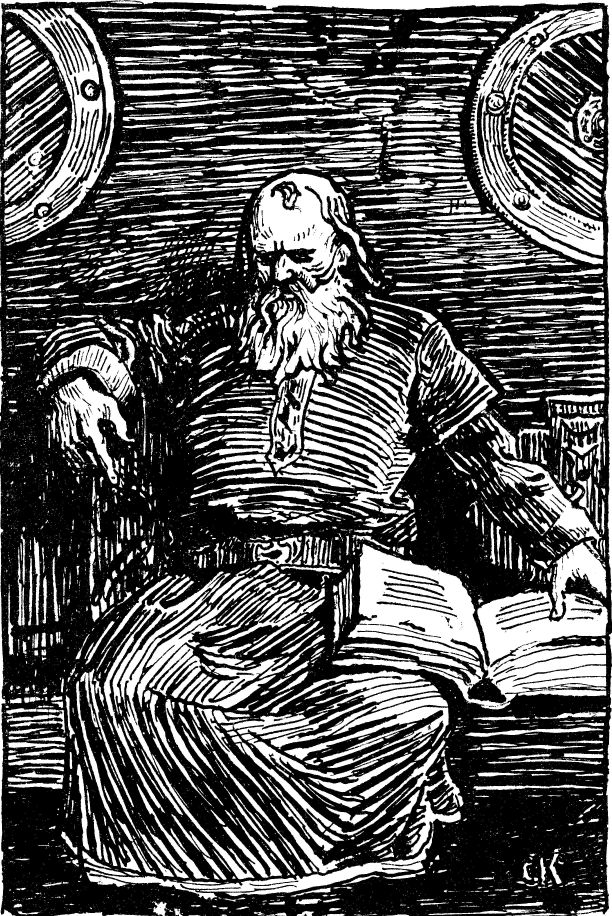
Preservation of Norse Mythology
Snorri's greatest achievement, perhaps, is the preservation of Norse mythology. Without his works, particularly the Prose Edda, our understanding of Norse myths would be far more fragmented and incomplete. He didn't just record these stories; he systematized them, presenting them in a coherent framework that has shaped our understanding of Norse mythology to this day.
Influence on Icelandic Literature
Snorri's influence on Icelandic literature cannot be overstated. His works set a standard for prose style in Old Norse, and his techniques for integrating verse into prose narratives influenced generations of saga writers.
Modern Recognition
In modern times, Snorri's work has found new appreciation. His retellings of Norse myths have inspired countless works of literature, art, and popular culture. From Wagner's operas to Marvel's Thor, the echoes of Snorri's work can be heard throughout Western culture.
Controversies and Criticisms
Yet, Snorri's legacy is not without controversy. Some scholars argue that his Christian background influenced his portrayal of Norse myths, leading to a euhemerized version of the gods. Others point out the political biases in his historical works.
Moreover, Snorri's own life raises ethical questions. He was a man of his time, involved in the power struggles and violence of the Age of the Sturlungs. How do we reconcile the man who preserved beautiful myths with the chieftain who played power politics?
Conclusion
Snorri Sturluson was a man of contradictions. A cunning politician and a gifted poet, a preserver of the old ways and a man of his time. His life was as complex and dramatic as any saga, and his legacy as enduring as the myths he recorded.
As we look back across the centuries at Snorri's life and works, we're reminded of the power of words to transcend time. In preserving the stories of his culture, Snorri achieved a kind of immortality. The gods and heroes he wrote about live on in our imaginations, their tales still captivating us as they did the listeners in medieval Icelandic halls.
Snorri Sturluson may have lived and died in the 13th century, but through his works, he speaks to us still. In the enduring popularity of Norse mythology, in the continuing relevance of the sagas, we see Snorri's true legacy - not as a politician or chieftain, but as a master storyteller who kept the flames of memory burning bright.
FAQs
- Was Snorri Sturluson a Viking?
No, Snorri lived several centuries after the Viking Age. He was an Icelandic chieftain, politician, and writer who lived from 1179 to 1241.
- Did Snorri Sturluson create Norse mythology?
A: No, Snorri didn't create Norse mythology. He compiled and systematized existing myths and legends in his work, the Prose Edda. Without his efforts, much of Norse mythology might have been lost to time.
- Why is Snorri Sturluson important?
Snorri is crucial for our understanding of Norse mythology and medieval Scandinavian history. His works, particularly the Prose Edda and Heimskringla, are primary sources for these subjects.
- How did Snorri Sturluson die?
Snorri was assassinated in his home in 1241, likely on the orders of the Norwegian king Hákon Hákonarson, whom Snorri had defied.
- What language did Snorri Sturluson write in?
Snorri wrote in Old Norse, specifically the Old Icelandic dialect. His works have since been translated into many languages.
References
Faulkes, A. (Ed.). (2005). Snorri Sturluson: Edda. London: Everyman.
Whaley, D. (Ed.). (2012). Poetry from the Kings' Sagas 1: From Mythical Times to c. 1035. Turnhout: Brepols.
Ciklamini, M. (1978). Snorri Sturluson. Boston: Twayne Publishers.
Torfi H. Tulinius. (2004). Skáldið í skriftinni: Snorri Sturluson og Egils saga. Reykjavík: Hið íslenzka bókmenntafélag.
Guðrún Nordal. (2001). Tools of Literacy: The Role of Skaldic Verse in Icelandic Textual Culture of the Twelfth and Thirteenth Centuries. Toronto: University of Toronto Press.
